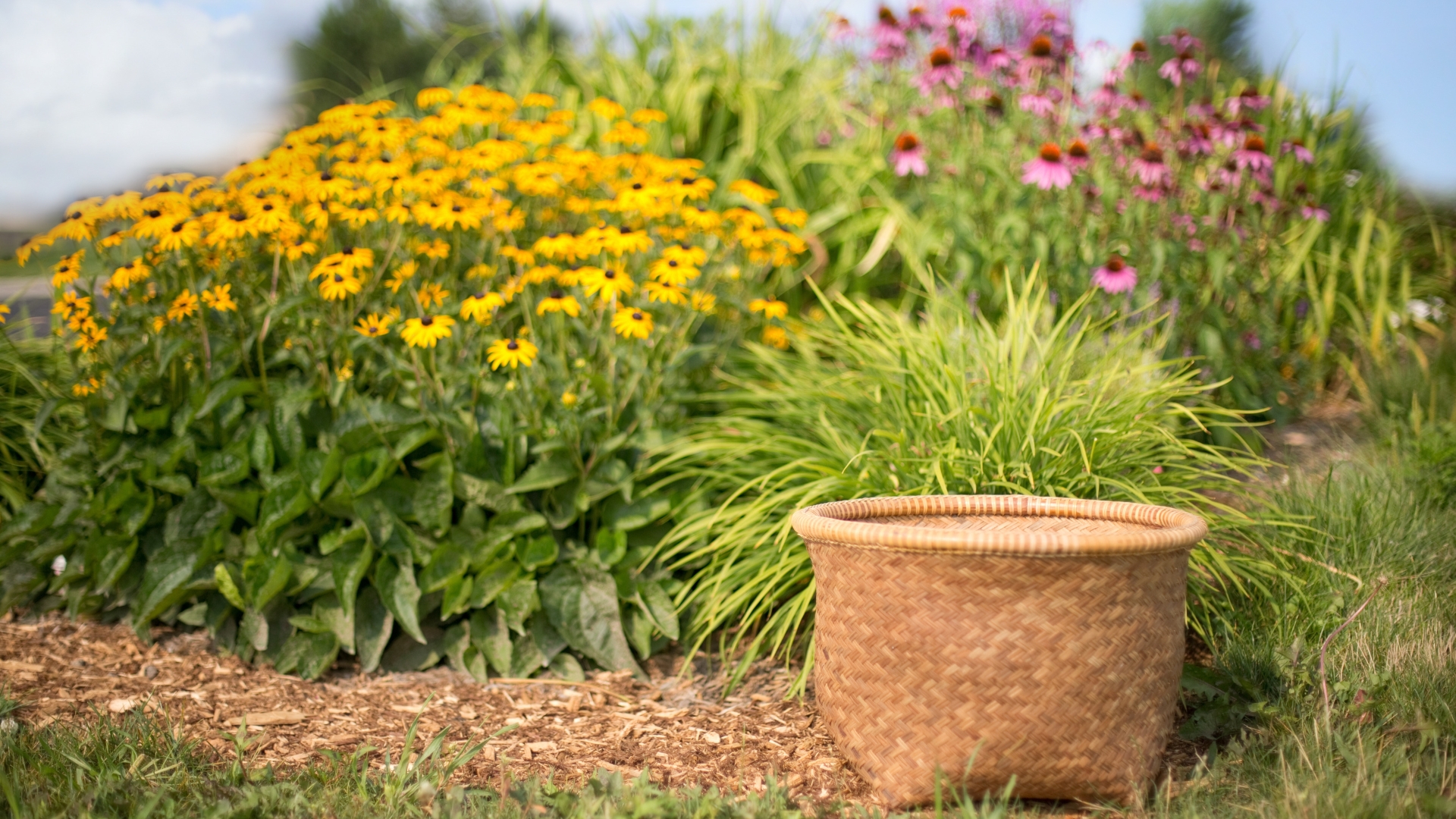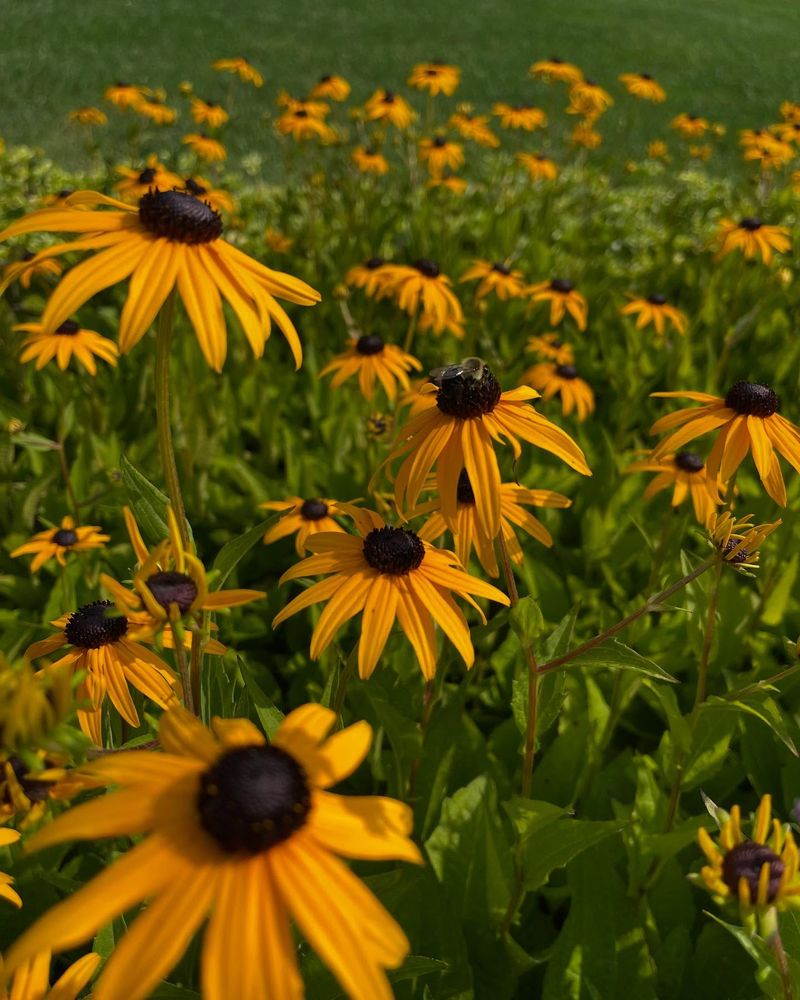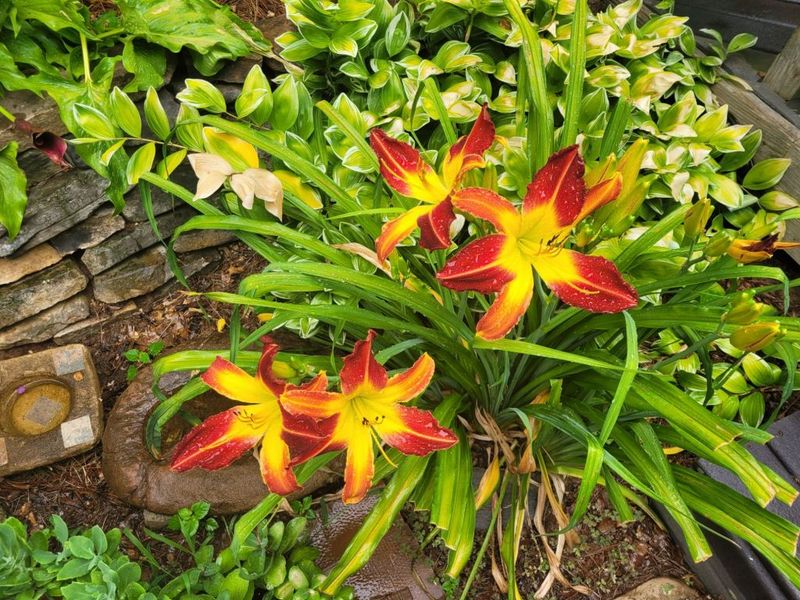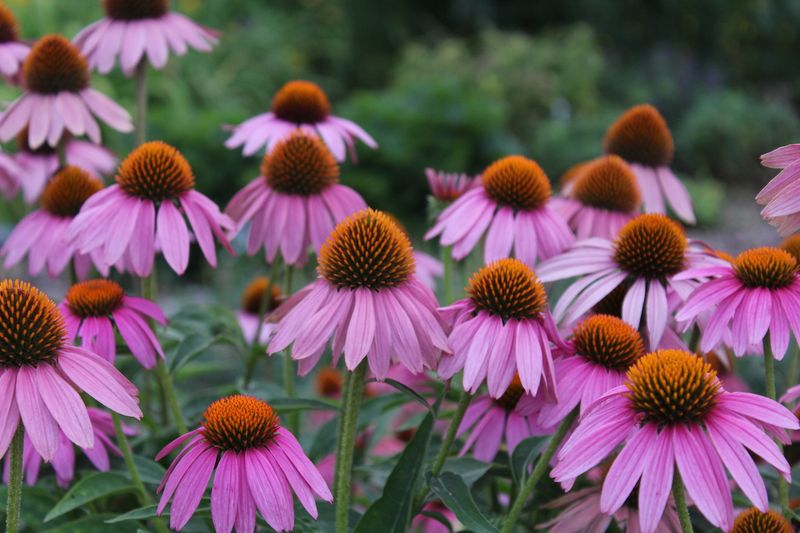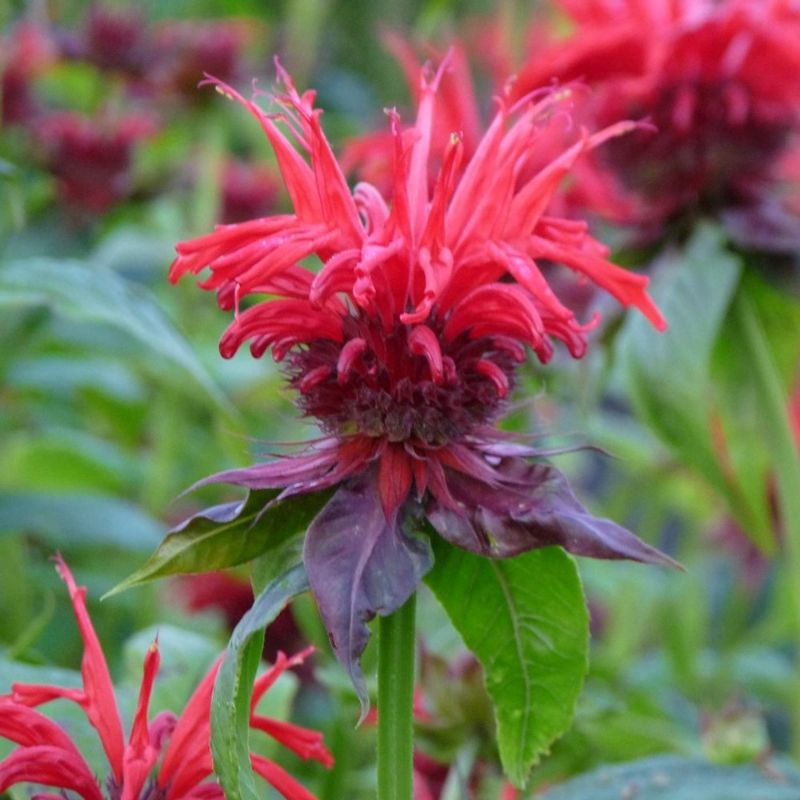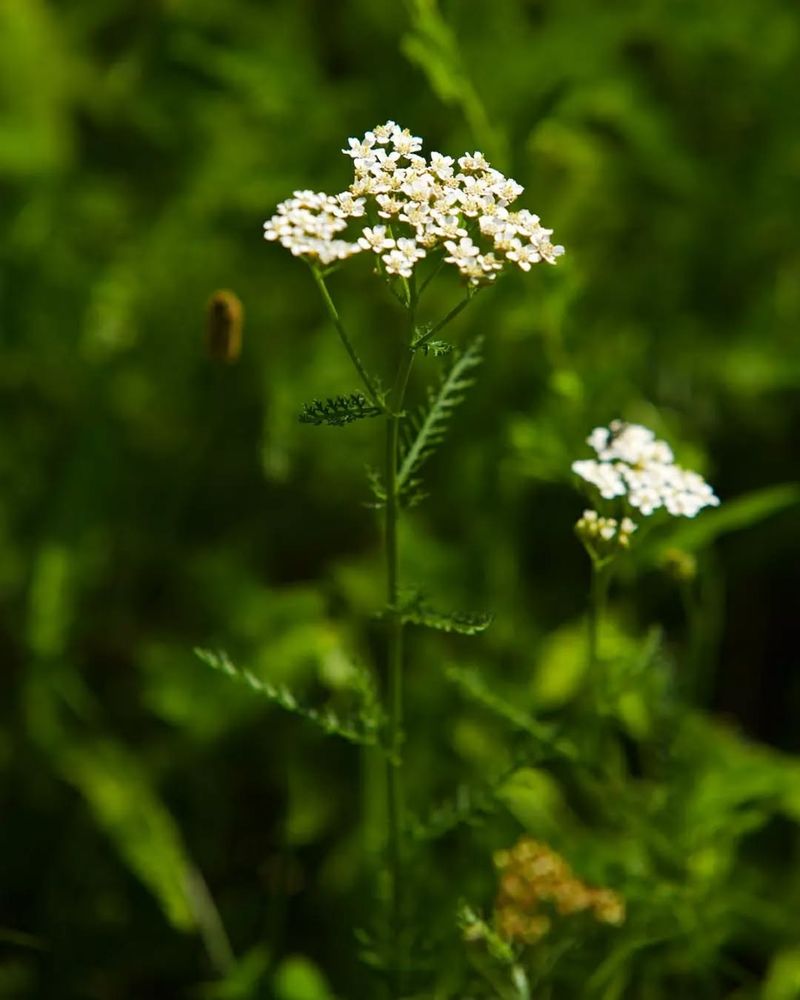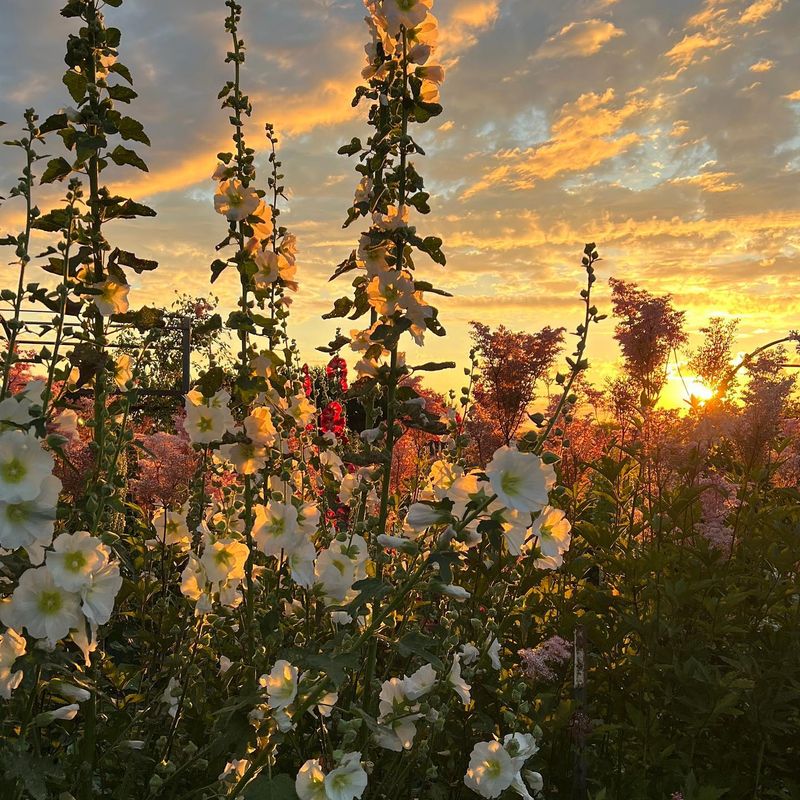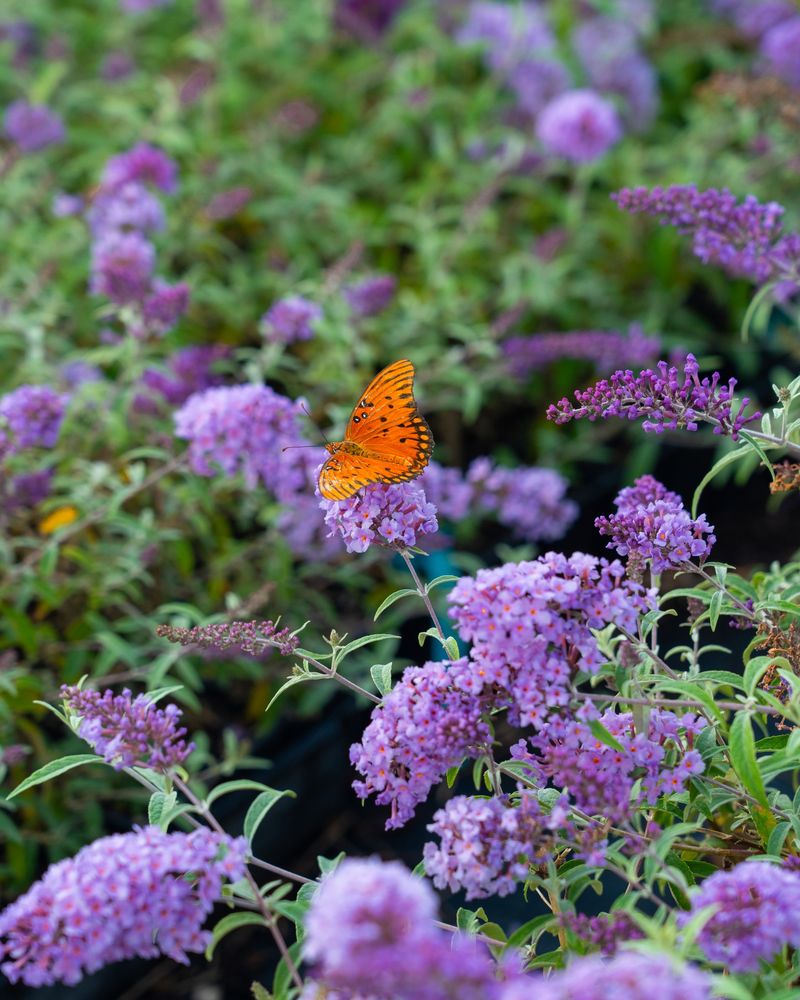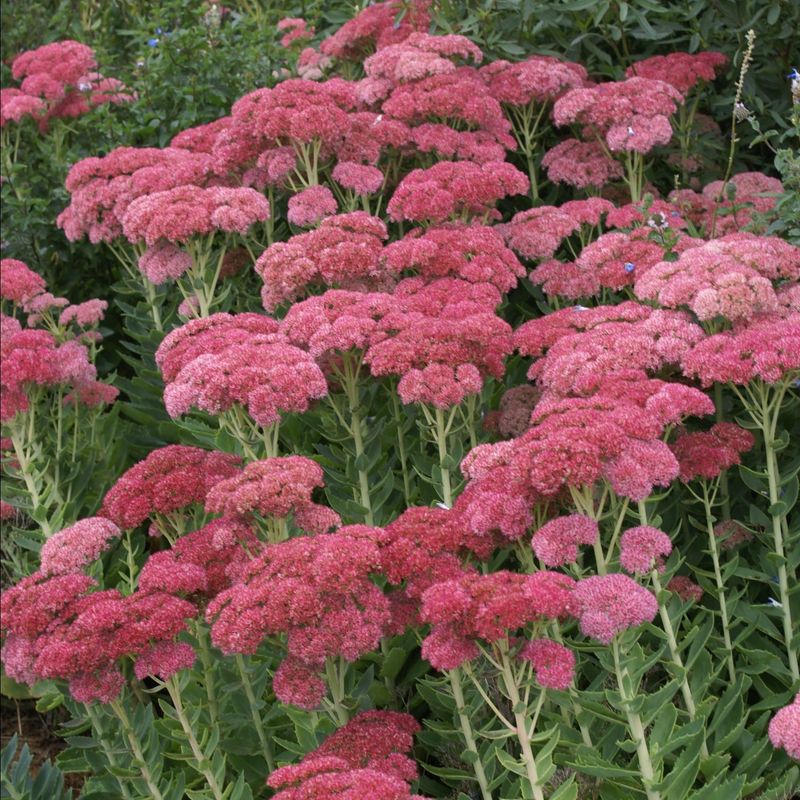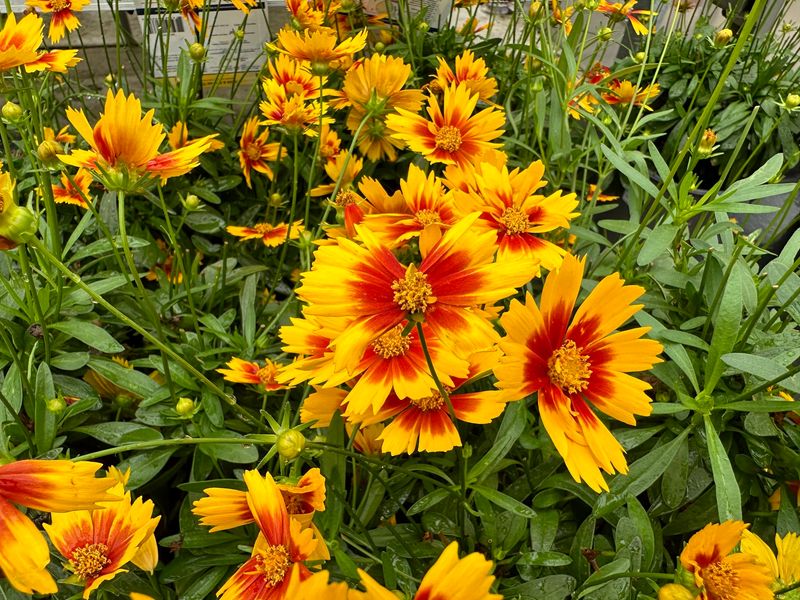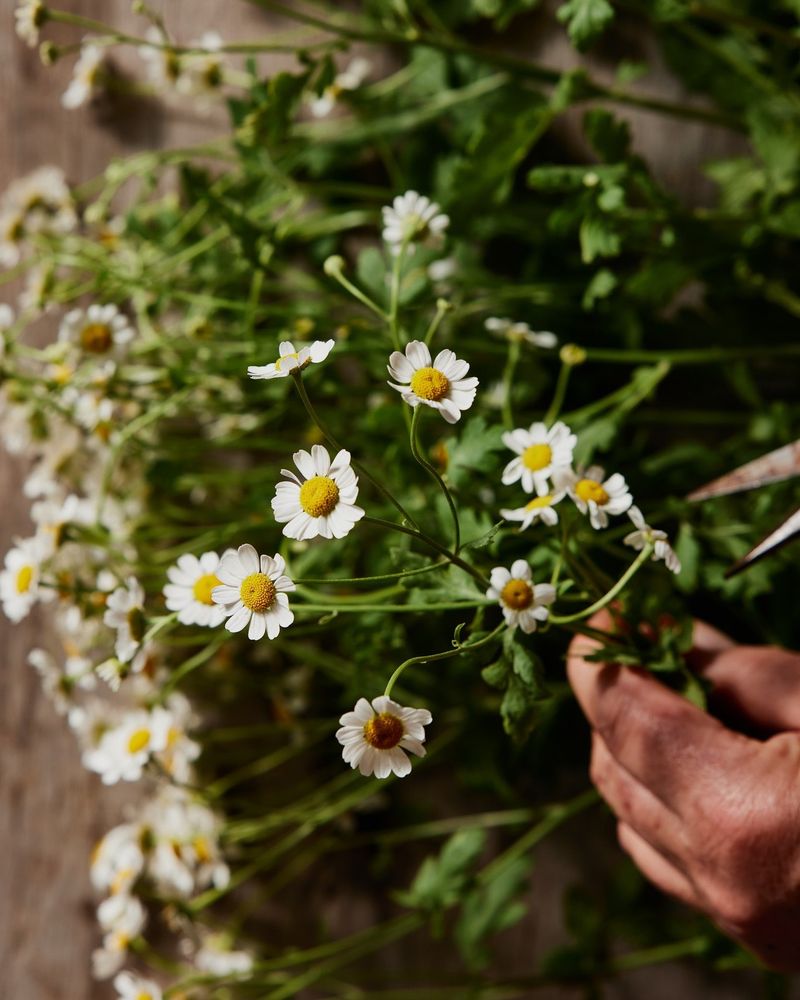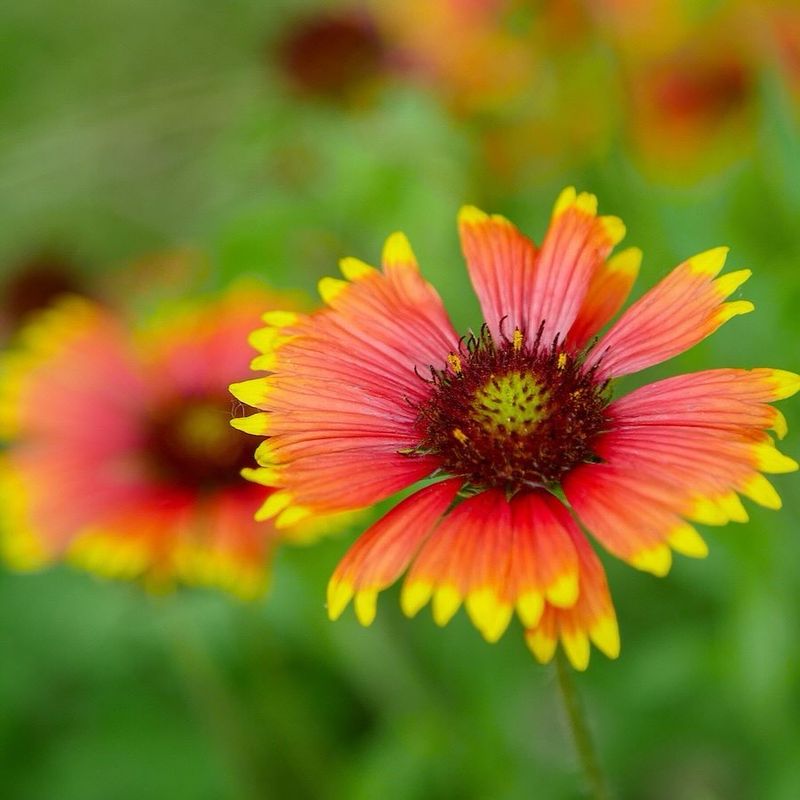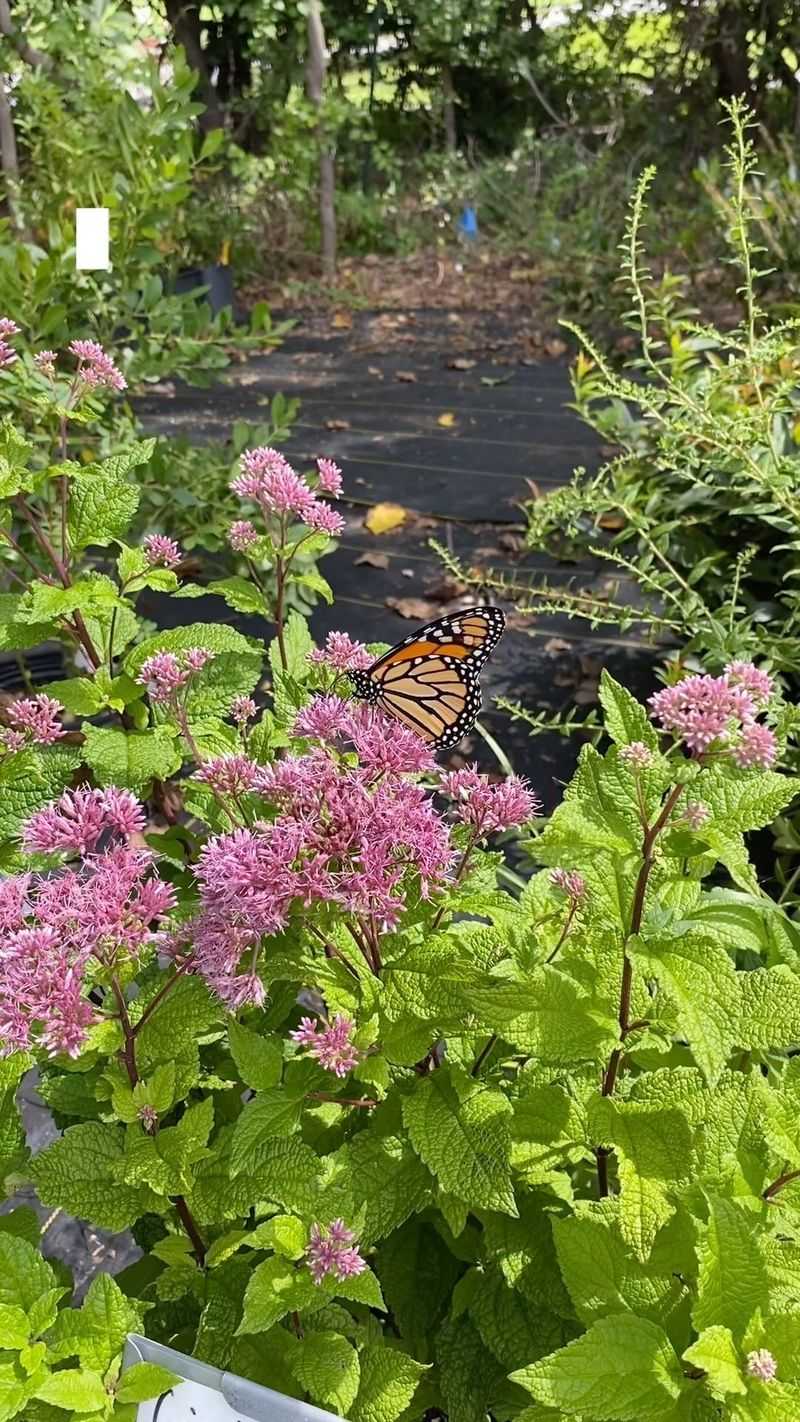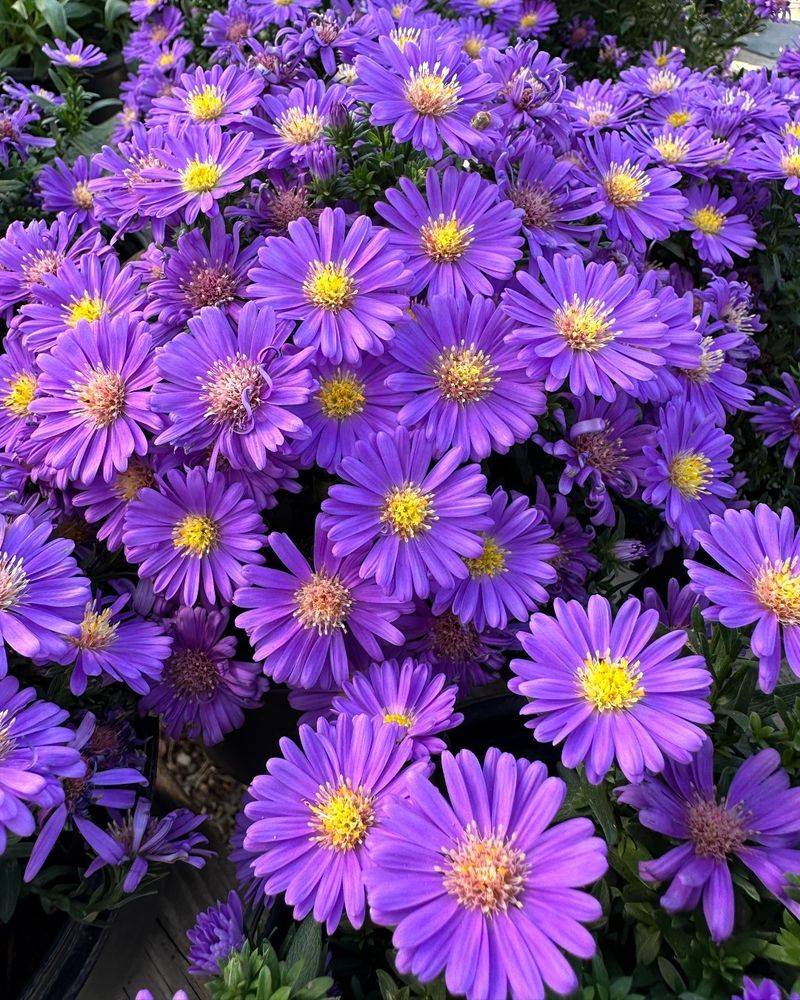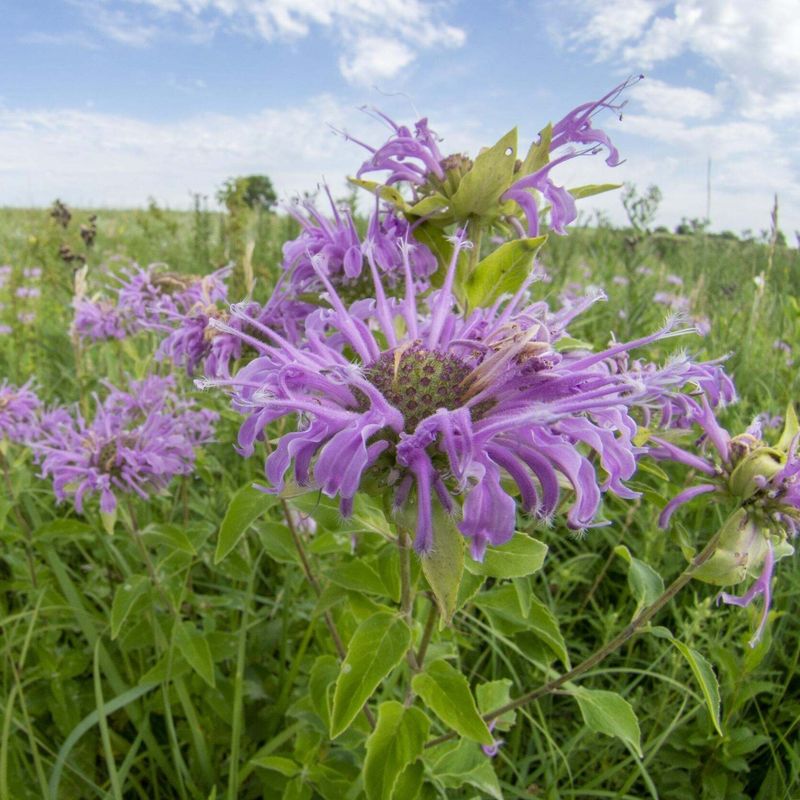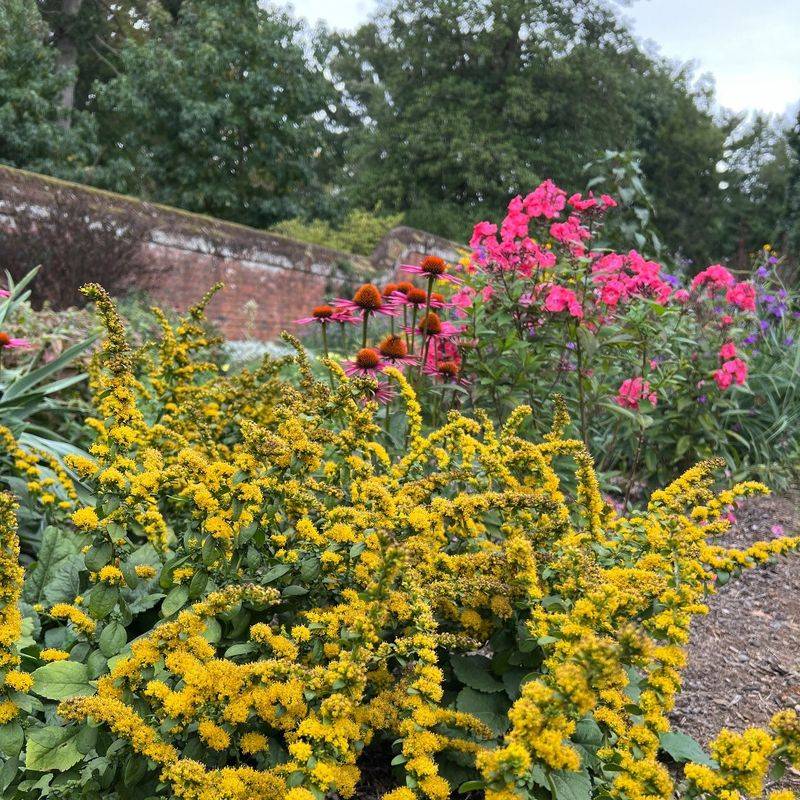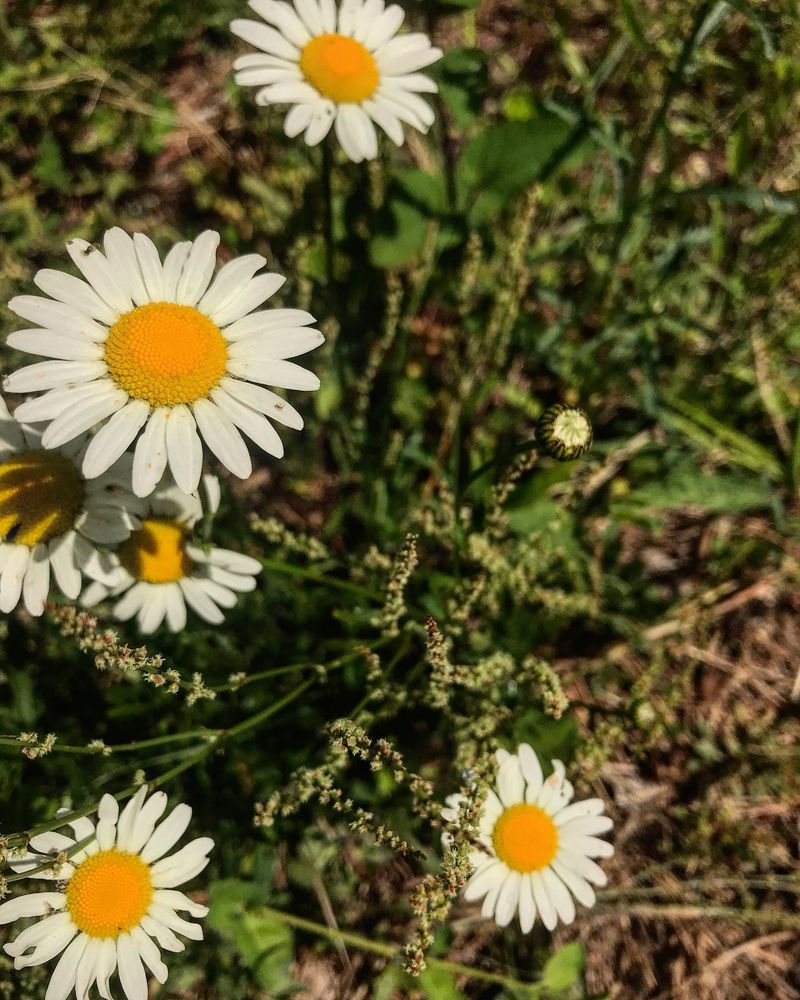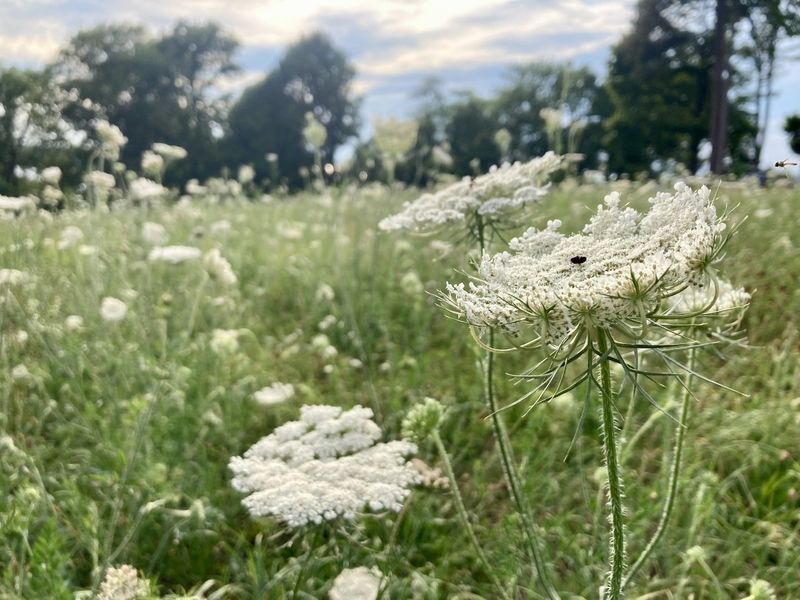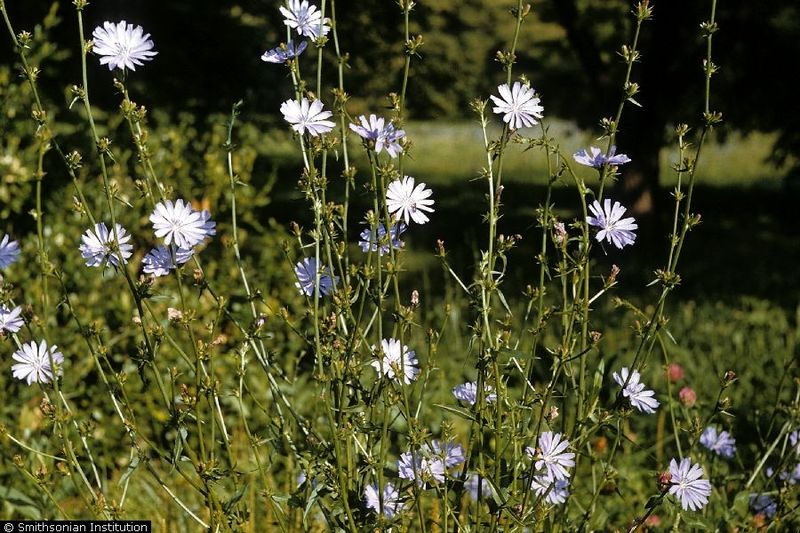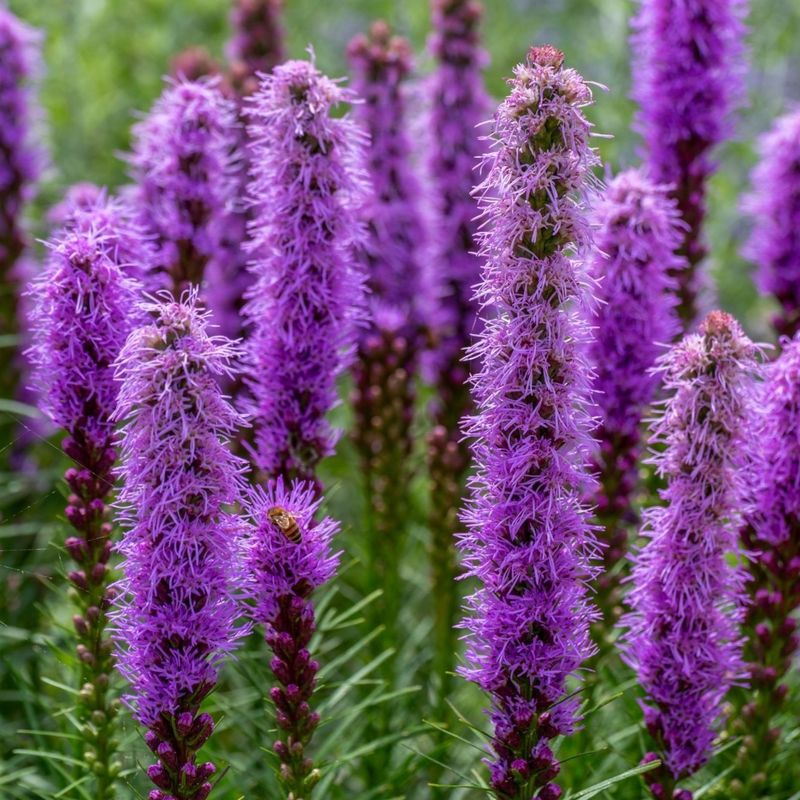In gardens where chaos reigns, certain flowers stand out, bringing color and beauty amidst the wild. These blooms are resilient, thriving in less-than-ideal conditions. Discover the unique flowers that not only survive but flourish in overgrown spaces, turning disorder into delightful displays.
1. Black-eyed Susan
Sunshine in flower form, the Black-eyed Susan is a beacon of cheerfulness. These flowers thrive in neglected gardens, with their bright yellow petals standing tall against a backdrop of green chaos. They’re drought-tolerant and attract butterflies, adding life and movement to any space.
Resilient in nature, they require minimal care, making them perfect for those who prefer low-maintenance gardening. Plant them once, and they’ll likely return year after year, spreading their sunshine through self-seeding.
With their robust nature, it’s no wonder they’re often the star in wildflower mixes.
2. Daylily
With blooms that last only a day, the daylily is a master of fleeting beauty. Yet, even in a tangled garden, it consistently brings bursts of color. These hardy perennials can thrive in a range of conditions, from full sun to partial shade.
Their trumpet-shaped flowers come in a variety of colors, from soft pastels to vibrant oranges and reds. Daylilies are not only pretty but also tough, handling neglect with grace.
Despite their short-lived flowers, they produce numerous buds, ensuring a long-lasting display throughout the summer months.
3. Coneflower
Echinacea, known commonly as coneflower, stands proud in the most unruly of gardens. With petals that radiate like sun rays and a spiky central cone, it attracts bees and butterflies alike. Its drought-resistance makes it a favorite in dry, overgrown spaces.
Coneflowers come in various colors, dominated by purples and pinks. They embody resilience, requiring little more than occasional deadheading to encourage more blooms.
As a bonus, echinacea is often used in herbal remedies, valued for its immune-boosting properties. A perfect choice for garden beauty and home health.
4. Bee Balm
A magnet for pollinators, bee balm dazzles with its vibrant red blooms and ragged petals. This plant thrives in cluttered gardens, bringing hummingbirds, bees, and butterflies to visit.
Bee balm prefers full sun but tolerates partial shade, making it adaptable to various garden conditions. Its aromatic leaves can be used to brew tea, adding to its charm.
For those seeking fragrance and color in a wild garden, bee balm is an excellent choice. It spreads easily, creating a lively, colorful display without much effort.
5. Yarrow
Yarrow’s feathery foliage and flat-topped clusters of flowers are a familiar sight in overrun gardens. Its ability to thrive in poor soil and dry conditions makes it a go-to for effortless beauty.
This perennial is not picky about its surroundings, growing happily among weeds and wild plants. Yarrow attracts beneficial insects, playing a vital role in maintaining garden health.
With colors ranging from white to yellow and pink, yarrow provides variety and interest. For those seeking a tough yet charming addition to their garden, it’s hard to beat yarrow.
6. Hollyhock
Hollyhocks stand tall like sentinels in cluttered gardens, their towering spikes covered in large, delicate blooms. These biennials thrive on neglect, often found flourishing in areas where other plants struggle.
Their height and varied colors, from pink to deep red, make hollyhocks a striking backdrop in any garden. They require little more than sunlight and well-drained soil to bloom beautifully.
With their old-world charm and resilience, hollyhocks are a favorite for adding vertical interest and a touch of whimsy to wild gardens.
7. Butterfly Bush
As its name suggests, the butterfly bush is a haven for butterflies. Its long spikes of fragrant flowers attract not just butterflies, but bees and hummingbirds too.
This shrub thrives in full sun and well-drained soil, making it perfect for overgrown gardens where it can spread freely. The purple blooms are most common, though it can also be found in pink and white varieties.
With its ability to attract pollinators and its easy care, the butterfly bush adds life and movement to any garden.
8. Sedum
Sedum, with its succulent leaves and starry flowers, is a tough contender in overgrown gardens. This plant is a survivor, thriving in poor soils and full sun.
Its fleshy leaves store water, making it drought-resistant and perfect for gardeners looking for low-maintenance options. The pink or white blooms add a soft touch to hard landscapes.
Beyond its beauty, sedum plays a role in supporting pollinators, attracting bees to its nectar-rich flowers. It’s a resilient and charming choice for any untamed garden space.
9. Coreopsis
Coreopsis brings a burst of sunshine to any garden with its daisy-like yellow flowers. This cheerful plant is known for its long blooming period, offering color from early summer to fall.
In cluttered gardens, coreopsis thrives with minimal care, tolerating drought and poor soil. Its bright blooms attract butterflies, adding dynamic life to the garden.
For those who love a pop of color and an easy-growing plant, coreopsis is ideal. It spreads easily, filling gaps with its sunny disposition and unwavering resilience.
10. Feverfew
Feverfew may be small, but its impact is grand. This plant is known for its medicinal properties and cheerful, daisy-like flowers. It thrives in overgrown gardens, requiring little more than sunlight and occasional watering.
Its white blooms with yellow centers create a soft, calming effect in wild spaces. Feverfew’s scent repels pests, making it a practical choice for natural pest control.
Aside from its beauty, feverfew is often used in traditional medicine for its potential health benefits, adding another layer of interest to the garden.
11. Blanket Flower
With its fiery red and yellow petals, the Blanket flower captures attention in any garden. Originating from North America, it’s known for its drought resistance.
The flower’s vibrant shades mimic a sunset, adding warmth to gardens. Despite harsh conditions, it blooms abundantly, making it a favorite among gardeners.
Its ability to thrive in poor soil is unmatched, embodying the spirit of survival. Did you know? The Blanket Flower attracts butterflies, turning any wild garden into a haven for these delicate creatures.
12. Joe-Pye Weed
Standing tall in meadows, Joe-Pye Weed boasts clusters of purple flowers that draw butterflies effortlessly. Named after a Native American herbalist, it’s steeped in history.
Its height, often reaching up to seven feet, creates natural privacy screens in gardens. This perennial thrives in moist soil but can adapt to drier conditions.
Joe-Pye Weed’s fragrance is subtle yet enticing, making it a charming addition to any wild garden. Its presence not only beautifies but also supports local wildlife with grace.
13. New England Aster
New England Aster, with its lush purple petals and golden centers, bursts into life during late summer, painting gardens with color. Its robust nature withstands the harshest weather.
This aster is a magnet for pollinators, inviting bees and butterflies.
Native to North America, it represents adaptability and strength. These asters can grow in sandy or clay soils, making them versatile and low-maintenance. Their presence in a garden signals the transition from summer to fall, marking a season change beautifully.
14. Wild Bergamot
Lavender blooms of Wild Bergamot stand out with unique, tubular shapes. Native to North America, this plant is resilient against drought and poor soil.
Known also as “bee balm,” it attracts a diverse range of pollinators, contributing to ecosystem health. Its aromatic herbal scent is a bonus.
The plant’s long history of medicinal use adds to its charm, making it a holistic addition to any garden. Wild Bergamot’s adaptability makes it a staple in wild, untamed gardens.
15. Goldenrod
Goldenrod, often mistaken as an allergen, is a striking addition with its bright yellow plumes. It thrives in full sun and poor soil, demanding little care.
Its tall, graceful stems add structure and height to any garden. This plant is crucial for late-season pollinators, offering nectar when few other sources are available.
Goldenrod supports biodiversity, contrary to its misunderstood reputation. Its presence ensures a lively garden filled with buzzing bees and fluttering butterflies, making it indispensable in wild landscapes.
16. Oxeye Daisy
The Oxeye Daisy, with its classic white petals and sunny yellow center, embodies simplicity and resilience. It requires minimal maintenance, thriving in various soil types.
These daisies are often seen scattered across fields, effortlessly integrating into wild gardens. They bloom from late spring to autumn.
Besides its aesthetic appeal, the Oxeye Daisy improves soil quality and provides habitat for small garden creatures. Its endurance in tough conditions makes it a reliable garden companion, ensuring beauty even in neglect.
17. Milkweed
Milkweed’s clusters of pink flowers are not only beautiful but also vital for monarch butterflies. This hardy plant withstands dry, poor soils, making it perfect for overgrown gardens.
Its milky sap and unique seed pods add texture and interest. Native to North America, milkweed is essential for the monarch lifecycle.
Beyond its ecological importance, milkweed adds a whimsical touch to any landscape, with its tall stalks and vibrant blooms. It’s a cornerstone for butterfly habitats, blending beauty with conservation.
18. Queen Anne’s Lace
Queen Anne’s Lace, with its delicate white blooms, resembles lacework atop tall, slender stems. It thrives in well-drained soil and full sun.
This plant, also known as wild carrot, has historical roots traced back to Europe. It offers more than beauty, providing food for swallowtail caterpillars.
Its intricate flowers add an elegant touch to wild gardens, attracting beneficial insects. Despite its delicate appearance, it’s tough and resilient, a perfect fit for untamed landscapes. Queen Anne’s Lace marries grace with ruggedness seamlessly.
19. Chicory
Chicory’s bright blue blooms stand out, especially in neglected areas like roadsides. This tough plant roots deeply, surviving in dry, poor soils.
Its flowers open in the morning sun, closing by afternoon, a daily dance with light. Chicory’s roots can be roasted as a coffee substitute, adding utility to its beauty.
Originally from Europe, it’s now common in North America. Its resilience and striking color make chicory a standout in wild gardens, offering both visual and practical benefits.
20. Liatris
Liatris, known for its tall spikes of purple flowers, adds vertical charm to gardens. A favorite among butterflies and bees, it’s a pollinator paradise.
This perennial thrives in sunny spots with well-drained soil. Liatris’ unique blooming pattern—from top to bottom—creates a dynamic visual.
Its robust nature allows it to flourish in wild gardens, providing color throughout late summer. Liatris is not just a visual delight but supports biodiversity, making it a valuable garden addition. Its vibrant spikes are both ornamental and functional.

